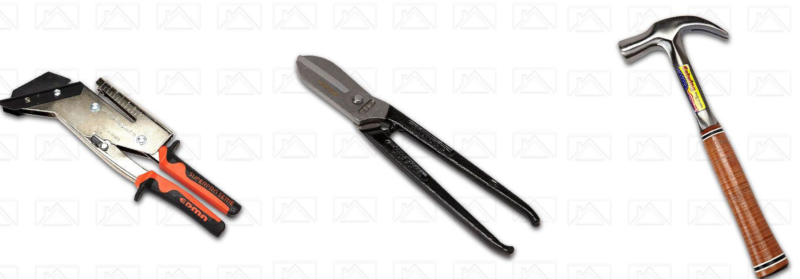How to use a slate ripper
In this article we will be covering how to use a slate ripper, but first, what is a slate ripper? This is a tool that is used to remove and replace broken, cracked or chipped slates from a roof.
Alongside your slate ripper (sometimes known as a slasher), you may also use a hammer, slate cutter, and lead snips.

Once you’ve located the leak, you can identify the damaged slates and then remove them using your slate ripper. It’s advised to start removing slates just above where you think the leak entry point is.
Your slate ripper is made up of the handle, the hammer section, the flat edge, and the hooks. The hooks at the end are used for ripping the nails from old slates - this is done by hitting the hammer section, not surprisingly, with a hammer. This movement will be sufficient for 90% of nails. The sharp end can be used on the remaining occasions to cut stubborn or rusty nails. Always keep the slate ripper flat to the slates to avoid further damage to surrounding slates.
Once the nails have been removed, you can sandwich the slate with the slate ripper placed beneath the slate and your palm on top, you should be able to gently nudge the slate from its position.
You will need to replace damaged slates with new. Once you’ve identified the dimensions of your slate (a common size is 18x9s), you can then use your slate cutter to trim your replacement slates (if needed). Each slate will be held in place with fresh nails (clouts).
On your final slate you will use a lead tag to hold in place. The tag is a strip of lead nailed to the slate beneath the final slate, and then hooked over the top of the slate to hold it into position. You can trim this lead tag using your lead snips for a clean finish.
If you live somewhere with extreme weather you may choose to use a sturdier hook method to keep the final slate in place, three options are; copper wire, hall hook, or slate hook.
Finally, don’t worry if the replacement slates appear a different colour, within a few months they will match up.
